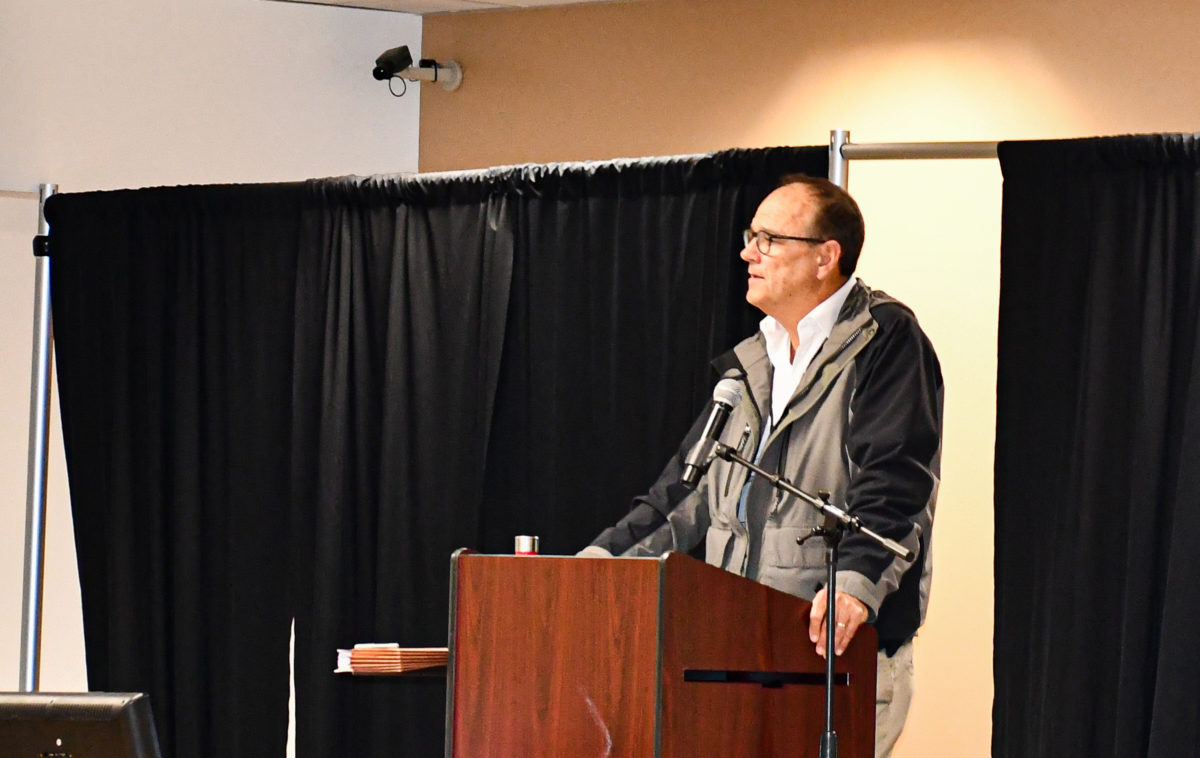By Clint Thompson It is time for petiole-sap testing or leaf tissue analysis for watermelon producers in North Florida. Bob Hochmuth, University of Florida Institute of Food and Agricultural Sciences (UF/IFAS) Regional Specialized Extension agent in Live Oak, Florida, discusses the testing service that UF/IFAS Extension provides to growers. “We collectively provide a service of going out and running petiole …
Florida Citrus Growers’ Institute Returns as an In-Person Event Next Week
After being forced to the virtual space by COVID-19 for the past two years, the Florida Citrus Growers’ Institute will return to an in-person event next week. This year’s institute will be held Tuesday, April 5 from 8:30 a.m. to 3 p.m. at South Florida State College, Alan Jay Wildstein Center for the Performing Arts in Avon Park, Florida. “We …
Florida Citrus Show Focused on HLB Fixes
Growers gathered in Fort Pierce last week for the Florida Citrus Show. More than 30 presentations and panel discussions were held during the two-day event. Topics covered included production, technology and markets. With the U.S. Department of Agriculture (USDA) predicting the smallest citrus crop in more than 70 years, urgency to seek solutions to HLB was high on the agenda. …
Water Quality Concerns in Florida Stir up Citrus BMP and Phosphorus Questions
As blue-green algae makes headlines again this summer, fertilizer from farms and urban sources are again under scrutiny. Last year, the state legislature passed the Clean Waterways Act to address continuing challenges with water quality. The 111-page bill addresses agriculture, using biosolids as fertilizer, regulation of septic tanks, wastewater treatment systems, enhanced penalties, and other rules. It is part of …
A Recipe for Sustained Success
By Clint Thompson There are multiple ingredients in John L. Hundley’s recipe for agricultural success: hard work, a capable supporting staff and willingness to adapt to the changing times. This is what has sustained Hundley Farms for more than 50 years and why Hundley will be inducted into the Florida Agricultural Hall of Fame on Feb. 15. “The bottom line …
Pecan Nutrient Management: Cut Costs, Not Corners
By Clint Thompson Nutrient management is a way pecan producers can decrease their input costs heading into the 2022 harvest season, says Lenny Wells, University of Georgia Extension pecan specialist. It starts with soil samples, which can be done any time of the year. But Wells stresses that growers do it at the same time every year. “If you take …
Weekly Updates: Clemson Extension Agents Discuss Various Crops
Clemson Extension agents provide updates in the The South Carolina Grower this week about the status of various crops being produced throughout the state. Weekly Field Update Coastal Region Rob Last reports, “In our area, crops are developing well with few pest or disease issues currently. Some brassicas are displaying a reddening to the older leaves associated with reduced phosphorous …
Fertilization of Blueberries in Pine Bark Beds
By Doug Phillips and Jeffrey G. Williamson Blueberries have specific nutrient requirements that differ from other horticultural crops. They have shallow root systems and no root hairs, which limits the ability to take up nutrients. Blueberries grow best in acidic soils (ideal pH range of 4.5 to 5.5) with at least 3% organic matter and prefer the ammonium form of …
Fundamentals of Plant Production: pH, Irrigation and Nutrient Management
By Craig Frey Sustainability of agricultural operations involves good stewardship of resources. Since at least the 1980s, sustainable nutrient management has been closely associated with the 4Rs — right source, right rate, right placement and right timing of nutrient applications. Over the last several decades, the grower, industry and research communities have continued to identify ways to reduce inputs while …
Keeping Phosphorus on the Farm
By Sanjay Shukla, Asmita Shukla and Alan W. Hodges Stormwater detention/retention systems or agricultural ponds can be used to convert the vegetation growing inside to a beneficial commodity while reducing phosphorus discharges. These are the findings of a study conducted by the University of Florida Institute of Food and Agricultural Sciences (UF/IFAS). The study evaluated the environmental and economic feasibility …











